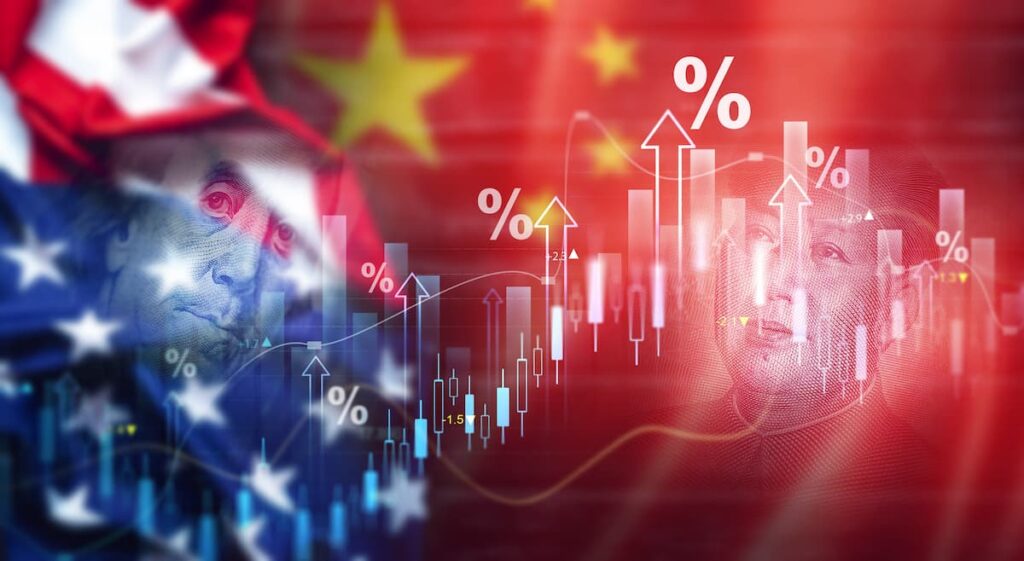As the gangway lowers at the Port of Hong Kong, the crew swiftly secures the massive ONE Modern vessel. Dwarfed by the towering pink container ship, workers in orange jumpsuits begin the intricate process of unloading and reloading more than 700 containers in under 10 hours. This scene plays out daily as companies worldwide race to navigate the latest chapter in the ongoing US-China trade war.
With the expiration of the US tariff pause looming, businesses are pushing to get goods out of China and into the United States. The heightened activity reflects growing anxiety across supply chains, where unpredictability has reached unprecedented levels. “The indices for unpredictability and chaos are actually at an all-time high,” said Roberto Giannetta, chairman of the Hong Kong Liner Shipping Association. “This instability is creating a lot of chaos.”
Trade Negotiations Offer Limited Relief
Recent negotiations in London produced a framework for a trade truce between the US and China. Despite this diplomatic progress, companies remain cautious. China remains America’s second-largest trading partner after Mexico, with trade volumes exceeding $688 billion last year. The fragile nature of these agreements leaves many executives bracing for further disruptions.
“The rules change three times a week,” said Rick Woldenberg, CEO of Learning Resources, an educational toy company based in Chicago. His remarks reflect the broader uncertainty many companies face. Following the US decision on April 2 to impose sweeping tariffs on numerous global partners, businesses have scrambled to adjust. The shipping industry, which handles 90% of all manufactured goods, has been particularly impacted by these shifting policies.
Even with a temporary 90-day pause on some tariffs, companies have adopted a cautious approach, treating the pause as temporary. Many firms are front-loading shipments to avoid being caught off guard by renewed tariffs. “Companies want to front load, because they simply don’t know what just a few weeks down the road, what reality is going to look like,” said Jens Eskelund, president of the EU Chamber of Commerce in China. The resulting inefficiencies and increased costs weigh heavily on businesses already managing complex logistics.
Strain on Supply Chains Intensifies
The ONE Modern, operated by Japan’s Ocean Network Express, exemplifies the global scale of the supply chain under pressure. The 302 meter-long vessel carries up to 7,000 containers filled with products such as clothing, furniture and car parts, most manufactured in China and destined for the US market. Following its stop in Hong Kong, the ship will continue to multiple Chinese ports, South Korea, and finally cross the Pacific and Panama Canal before reaching Houston, Texas.
Despite the turmoil, the shipping sector displays resilience. “Shipping always continues, no matter what you throw at it,” Giannetta said. Recent years have tested this resilience with the Covid-19 pandemic, the Suez Canal blockage and ongoing threats in the Red Sea.
However, American companies dependent on Chinese imports are struggling. “You will see a die-off of some of these businesses,” Woldenberg warned. “There’s tremendous destruction of wealth, and I don’t think that’s recoverable.” The toy industry has been especially vulnerable, with nearly 80% of US toy sales tied to Chinese production, according to the US Toy Association.
Legal Battles and Political Realities
Woldenberg’s company has pursued legal action against the Trump administration over the tariffs. Although a US district court initially granted an injunction, the decision remains on hold after a government appeal. “Of course we had to fight,” Woldenberg stated. “I can’t accept the knockout punch.”
Learning Resources, a century-old family business employing 500 people, has begun relocating some production outside China to shield itself from the volatility. Still, Woldenberg dismisses the notion that manufacturing can easily return to US soil. “A bureaucrat’s fantasy,” he called it, citing insufficient domestic capacity.
President Trump, however, has downplayed the tariffs’ impact. In an April 30 cabinet meeting, he remarked, “Maybe the children will have two dolls instead of 30. Maybe the two dolls will cost a couple of bucks more than they would normally.” Yet industry voices caution that the consequences extend far beyond minor price increases.
“Retailers will run out of product,” Woldenberg warned. The financial burden ultimately shifts to consumers. “All of these charges get pushed down to the consumer,” Giannetta added. Woldenberg agreed, stating, “They can call it tariffs or whatever they want, but it’s a tax and they’ve turned our company into a tax collector.”



